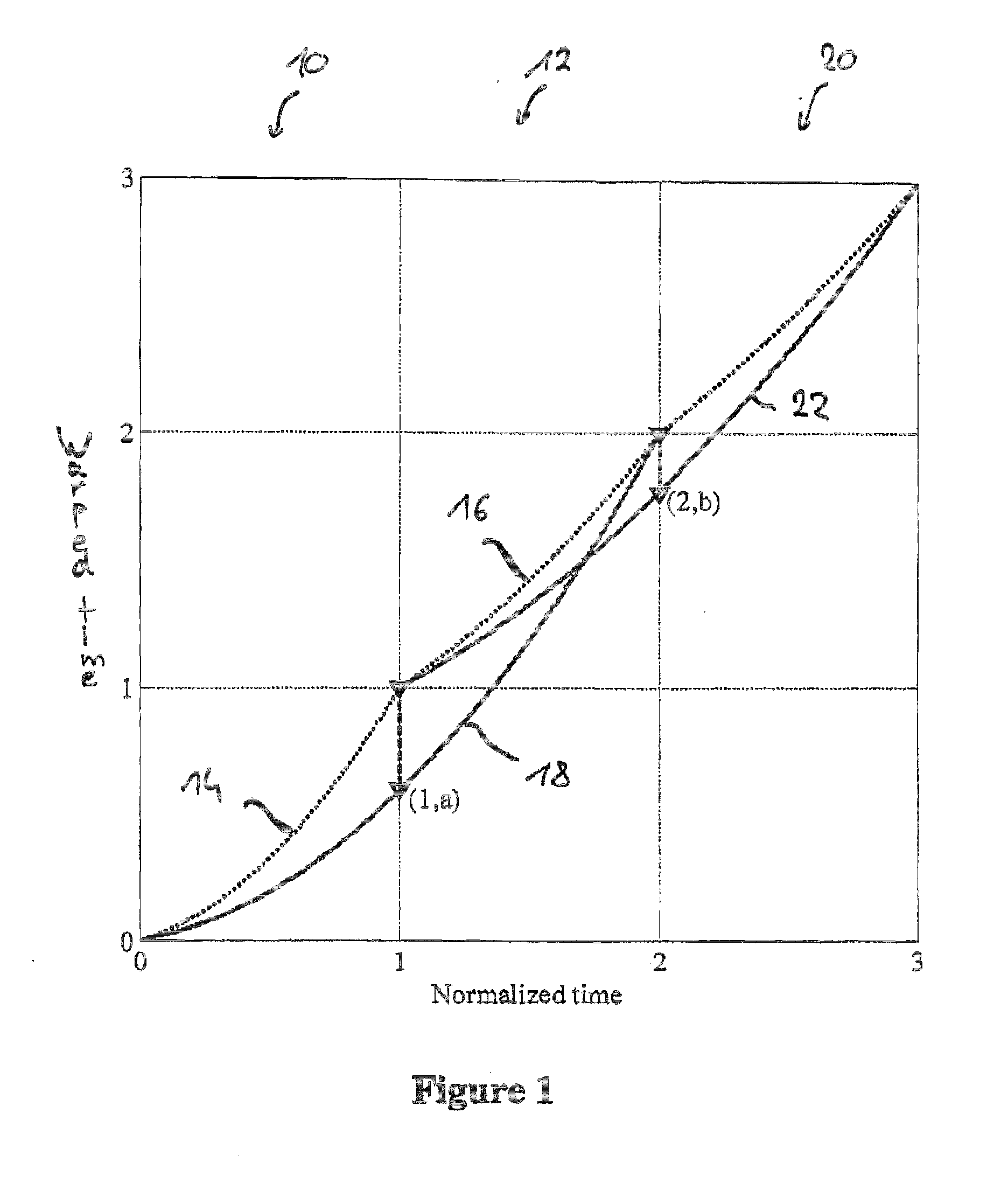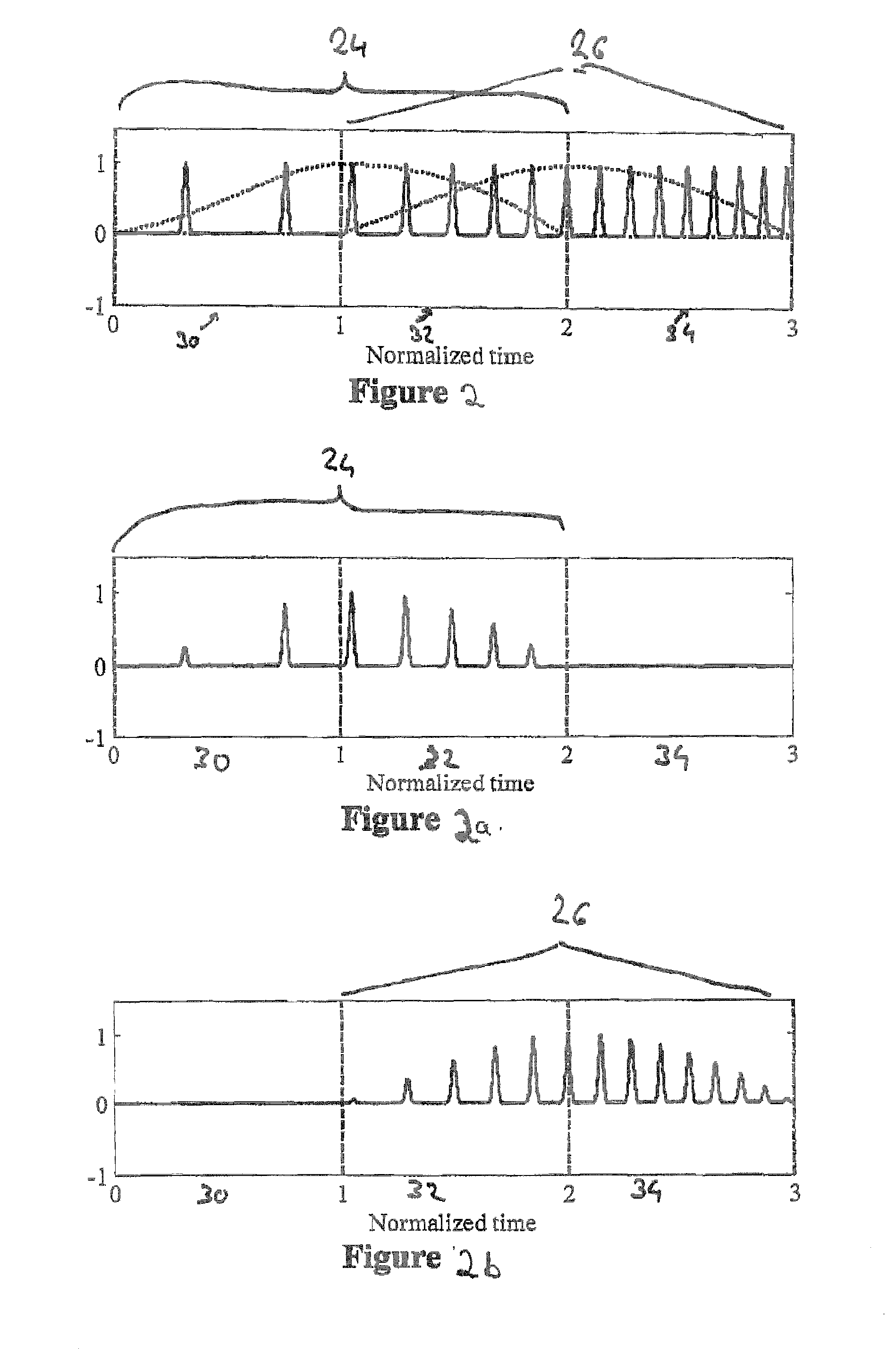Time warped modified transform coding of audio signals
- Summary
- Abstract
- Description
- Claims
- Application Information
AI Technical Summary
Benefits of technology
Problems solved by technology
Method used
Image
Examples
first embodiment
[0107] Summarizing, according to an inventive decoder, inverse time-warped MDCT comprises, when decomposed into individual steps:
[0108] Inverse transform
[0109] Windowing
[0110] Resampling
[0111] Overlap and add.
second embodiment
[0112] According to the present invention inverse time-warped MDCT comprises:
[0113] Spectral weighting
[0114] inverse transform
[0115] Resampling
[0116] Windowing
[0117] Overlap and add.
[0118] It may be noted that in a case when no warp is applied, that is the case where all normalized warp maps are trivial, (ψk(t)=t), the embodiment of the present invention as detailed above coincides exactly with usual MDCT.
[0119] Further embodiments of the present invention incorporating the above-mentioned features shall now be described referencing FIGS. 8 to 15.
[0120]FIG. 8 shows an example of an inventive audio encoder receiving a digital audio signal 100 as input and generating a bit stream to be transmitted to a decoder incorporating the inventive time-warped transform coding concept. The digital audio input signal 100 can either be a natural audio signal or a preprocessed audio signal, where for instance the preprocessing could be a whitening operation to whiten the spectrum of the inpu...
PUM
 Login to View More
Login to View More Abstract
Description
Claims
Application Information
 Login to View More
Login to View More - R&D
- Intellectual Property
- Life Sciences
- Materials
- Tech Scout
- Unparalleled Data Quality
- Higher Quality Content
- 60% Fewer Hallucinations
Browse by: Latest US Patents, China's latest patents, Technical Efficacy Thesaurus, Application Domain, Technology Topic, Popular Technical Reports.
© 2025 PatSnap. All rights reserved.Legal|Privacy policy|Modern Slavery Act Transparency Statement|Sitemap|About US| Contact US: help@patsnap.com



